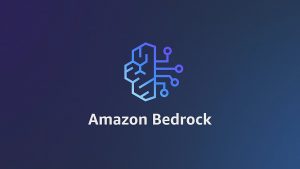IBM on DevOps culture + acquisition strategy | #IBMpulse
![]() Steve Mills, Senior Vice President and Group Executive for IBM Software & Systems, discussed the transition of the tech industry to the cloud and new trends in the developer world with theCUBE co-hosts John Furrier and Dave Vellante, live from IBM Pulse 2014.
Steve Mills, Senior Vice President and Group Executive for IBM Software & Systems, discussed the transition of the tech industry to the cloud and new trends in the developer world with theCUBE co-hosts John Furrier and Dave Vellante, live from IBM Pulse 2014.
Commenting on the cloud transition, Mills explained that each of these trends had similarities, and differences from what happened in the past. “In some respects you get to do things that you’ve done before,” but as the technology advances, “you can do it in ways that weren’t possible,” he said, noting economic efficiencies and at faster speeds. “Around these cloud based implementations, we work with customers to rethink their business processes, making them more fluid, more dynamic,” said Mills.
“I get very excited about the fact that we can do things at a scale today that we could never have imagined a decade before,” Mills said. “It’s more data, obviously you throw in a bit of mobile, and social, it becomes a multidimensional challenge.”
There are many different aspects of technology coming together, which is impacting the way we look at a problem. “In truth there’s never been a more exciting time, it’s also never been more challenging for our clients,” Mills went on.
Consumers are the new developers
.
On the development front, Mills said it was “harder and harder to differentiate who is a developer of technology. People will both develop and consume.”
It is now possible to build useful software without developing knowledge, using available tools.
Commenting on IBMs demo from day one of Pulse, when an app was built within minutes, Mills said it all was focused “very much around construction more so than programming. It’s changing the paradigm, allowing composition, allowing creativity and expression to occur.”
It’s all very visual, logical. It was “the kind of thing that dramatically expands the adoption of technology, making it accessible to all kinds of developers, many of whom do not have formalized training.”
Asked to asses the impact of the DevOps culture where professionals “don’t want to deal with the configuration of hardware, they want to push code,” Mills said “the environment needs to be welcoming,” allow for experimentation. “It really is about creativity: given my craft and my skills, if you give me more tools, I can produce more. The environment needs to be adaptive,” to provide open tooling and open components.
The x86 server business sale, an economic decision
.
Asked what prompted IBM to exit the x86 server business, Mills explained “what we sold, or selling to Lenovo, is our basic x86 business. There are parts we are not selling,” he went on, noting products revolving around software and apps.
“We sell as software but come with hardware. It is very much an economic decision,” Mills said, going on to say that margins are very stressed in the x86 businesses. There still is a need for distribution, channel partners will continue to deliver x86 products.
“There was an inability in making the money we wanted to make and deliver hardware as hardware,” Mills noted, with the exception of software wrapped around the hardware. “We’re going to continue to be a systems company, we are a storage business,” Mills stated. “We’re one of the biggest providers of flash. There are a lot of software-enabled offerings in the software space that are changing the storage business.”
Watson’s Big Data strategy
.
Commenting on Watson and IBM’s Big Data strategy, Mills said, “Watson clearly is a Big Data system. If you’re patient and you keep feeding it information, it becomes all-knowing.”
The challenge is in determining where Watson is a practical solution to a problem,” Mills explained. “There are things in the world that have very deterministic characteristics. We’ve invested $20 billion in acquiring tech around analytics. What Watson really represents – a set of capabilities brought together in a system, designed to deal with complex problems when the amount of data is huge. You teach the truth to the system.”
As the truth increases, the system is able to run the statistics.
Asked what IBM’s secret to a successful acquisition strategy was, Mills said “our strategy has been consistent, that’s one of the things that has made it a good approach. We buy things that fit with what we have, we believe in adjacency.”
A message from John Furrier, co-founder of SiliconANGLE:
Your vote of support is important to us and it helps us keep the content FREE.
One click below supports our mission to provide free, deep, and relevant content.
Join our community on YouTube
Join the community that includes more than 15,000 #CubeAlumni experts, including Amazon.com CEO Andy Jassy, Dell Technologies founder and CEO Michael Dell, Intel CEO Pat Gelsinger, and many more luminaries and experts.
THANK YOU













